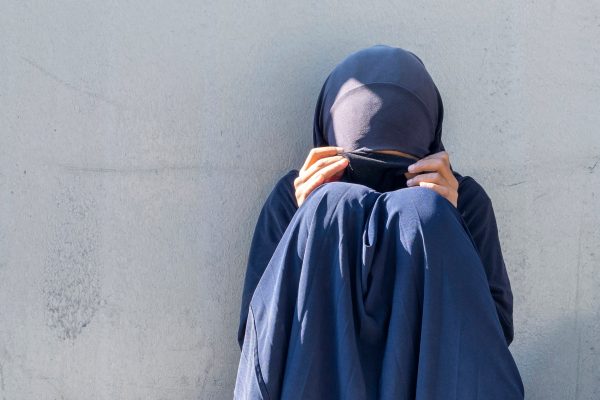Right after the movie was screened all over India, with tax waivers and other concessions to increase its viewership, cinema halls reverberated with genocide calls and hate speeches against Muslims and Kashmiris. Social media is equally littered with calls for violence against Muslims to avenge the “genocide” of Pandits.
Right after the movie was screened all over India, with tax waivers and other concessions to increase its viewership, cinema halls reverberated with genocide calls and hate speeches against Muslims and Kashmiris. Social media is equally littered with calls for violence against Muslims to avenge the “genocide” of Pandits.
The Kashmir Files, a Bollywood feature film on Hindus of Kashmir, also known as Kashmiri Pandits, has sparked a polarising debate in India. It resonates with the current popular political narrative in the country and hence is a huge commercial hit.
But at the same time, it is also facing accusations of fueling anti-Muslim hatred and thereby serving the agenda of Prime Minister Narendra Modi’s Hindu nationalist government.
Written and directed by Vivek Ranjan Agnihotri, the Kashmir Files tells the story of Kashmiri Pandits, a minority community who fled the valley in the early 90s when insurgency against Indian rule broke out in the region. Instances of militants targeting members of the community sparked a dread and thereby triggered their migration.
Krishna (Darshan Kumar), the protagonist, is a Kashmiri Pandit student in Delhi where he is getting lessons on Kashmir conflict from his leftist professor Radhika Menon. Oblivious to his family’s past, he goes to Kashmir in order to fulfill his grandfather Pushkar Nath’s (Anupam Kher) last wish. He meets Nath’s four friends who narrate the “real history and story” of Kashmiri Pandits to both Krishna and the audience.
***
Conflicts are always multi-layered and should be approached multi-dimensionally for portrayal and debate. Any other treatment gives rise to rabid propaganda. The Kashmir Files falls in that category.
In the ensuing story, Pandits are termed as the only real inhabitants of Kashmir who were forcefully converted to Islam by outsider “Sufi swords”. As per the film, Pandits are the real harbingers of knowledge and civilization in Kashmir, and Muslims are hellbent on destroying the holy ethos.
Sufi shrines and mosques including the much-revered Dargah Hazratbal and Khanka e Mualla are shown on screen as places blaring out hate. But history has different lessons to offer on how Islam spread in Kashmir through peaceful preaching and not through violence.
The movie clearly aims to establish and consolidate an alternate history of Kashmir’s 90’s era by showing a one-sided story. It cherrypicks incidents from the past to feed a majoritarian agenda on Kashmir only to paint the whole Kashmiri Muslim populace as communal ghouls ready to kill and plunder.
The movie has employed the textbook ploy of orientalists by portraying Muslim characters as either “terrorists”, “fanatics” or just people serving as a negative stereotype. Muslim characters are mostly shown as Kalashnikov bearing bearded savages with dark Kohl eyes while as the Hindu characters are shown as “civilized”, “educated” and “peaceful”.
‘Leave Education If You Want To Wear The Hijab’: Colleges In India Shut Gates On Muslim Girls
The Kashmir Files isn’t just an addition to the huge trove of Bollywood movies high on ultra-nationalistic vitriol regarding Kashmir but a more than ever weaponized hateful fiction capable of real-life deadly ramifications. Right after the movie was screened all over India, with tax waivers and other concessions to increase its viewership, cinema halls reverberated with genocide calls and hate speeches against Muslims and Kashmiris. Social media is equally littered with calls for violence against Muslims to avenge the “genocide” of Pandits.
The Kashmir Files not only fills the whole running time with hate, exaggeration, and distorted versions of the history, it also purposely evades to put a spotlight on the centrality of the Kashmir issue.
The movie intentionally fails to contextualise the roots and genesis of the conflict and violence. Kashmir is the most militarised zone in the world. The violence, both military and militant, is a product of this very fact, yet the movie completely obliterates the image of Indian army personnel stationed in the region. Questions like where the issue is rooted and why (how) militancy erupted have been completely shut out and left unanswered.
Muslims have suffered the worst — killings, rapes and torture, enforced disappearances— in the conflict but the movie deliberately doesn’t acknowledge this part of the Kashmir story.
The film also echoes the often-repeated claim of far-right Hindu and Pandit organizations that what happened to Pandits in Kashmir was “genocide”, much like the holocaust of Jews.
However, the statistics available from several official sources paint a different picture altogether. According to the official data of the Ministry of Home Affairs, 219 pandits have been killed in Kashmir since 1989. Kashmir Pandit Sangharsh Samiti (KPSS), an organization of Pandits who never fled Kashmir, puts the estimate of killings at 650. Some right-wing Pandit organizations report around 1500 Pandits were killed. None of the documented sources or organizations on both sides of the issue match the figure of 4000 killings as claimed.
The scenes of murder, arson, and discrimination have been captured in their raw barbarity, at times, devoid of any context and nuance. It seems like the filmmakers have prioritized making the scenes as emotionally evocative as possible, not caring about reality and ramifications.
The film weaves a malicious narrative in alignment with the right-wing Hindu propaganda where a Muslim neighbor is always eying to usurp his Hindu neighbor’s property and marry the womenfolk. For instance, when Krishna’s mother suggests the long-bearded village cleric cum teacher also teach science in school, a communally charged marriage proposal is offered in return. The repeated instances of Muslims trying to forcefully marry Hindu women in the movie feeds into the propaganda of “love jihad”, a Hindu right-wing bogey that has led to laws against conversion and interfaith marriages in several Indian states.
The lies don’t end there. Even Pro-India Kashmiri politicians haven’t been spared. The film launches a stark attack against Farooq Abdullah and Mufti Mohammad Syed, two former Cheif Ministers of the region, for allegedly being complicit in the “Pandit genocide and exodus”. This selective treatment isn’t unintentional at all. Agnihotri has time and again openly supported the Hindu nationalist BJP government and its right-wing narratives. Mithun Chakraborty, playing one of the lead roles in the film is a BJP leader, and Anupam Kher is an open certified BJP supporter.
Muslim Prayer is Under Attack from Hindu Nationalists in India’s Gurgaon
A full-blown tirade is being launched against the institution of media for not showing the “real story” of Pandits to the world. Foreign media is lambasted for reporting “staged sufferings of Kashmiri Muslims” who “cry victim for mere 500 rupees”. The call for the right to self-determination of Kashmiris is conflated with terrorism and rights violations with “clickbait headlines”.
The question now arises why films like The Kashmir Files distort the reality of the Kashmir issue and present a blown-out account of Pandit killings in Kashmir. The intent seems to criminalize the identity of already battered Kashmiri Muslims and incite vengeful violence.
The movie portrays the whole Kashmiri Muslim population as hostile conspirators of the Pandit “genocide” and “exodus”. In one of the scenes, little Kashmiri Muslim children and women are shown chanting hate slogans like ‘Raliv, tsaliv ya galiv’ meaning ‘Convert, flee or die’. Events like these have no established historical reference but still have made their way to TV screens all over India.
What can be more dangerous than passing a venomous fictional account of events as authentic history! Given the severity by which the half-truths and lies have been presented, the movie can become a reference to justify violence against Kashmiris and Muslims in the future. With state patronage and mass level viewership, it is set to drastically widen the gap between Kashmiri Muslims and Pandits. What Kashmiris, both Muslims and Pandits, need is a considerate, nuanced, and factual portrayal of their tragedies – not a biased movie baying for Muslim blood.





